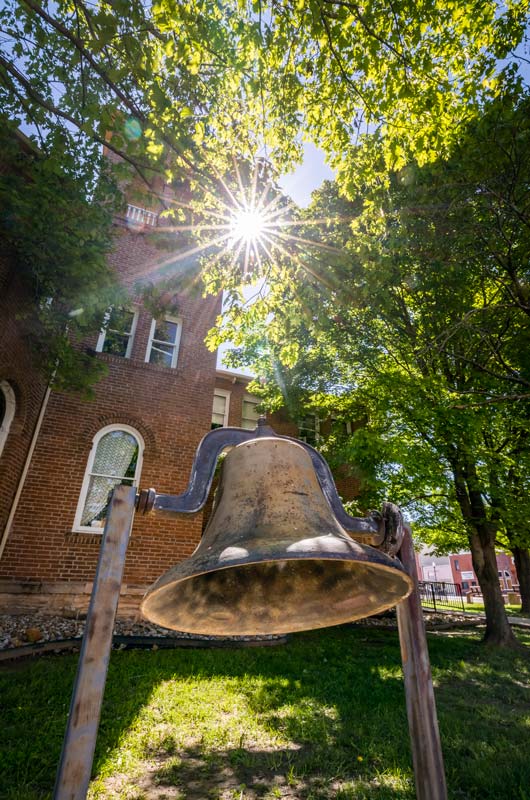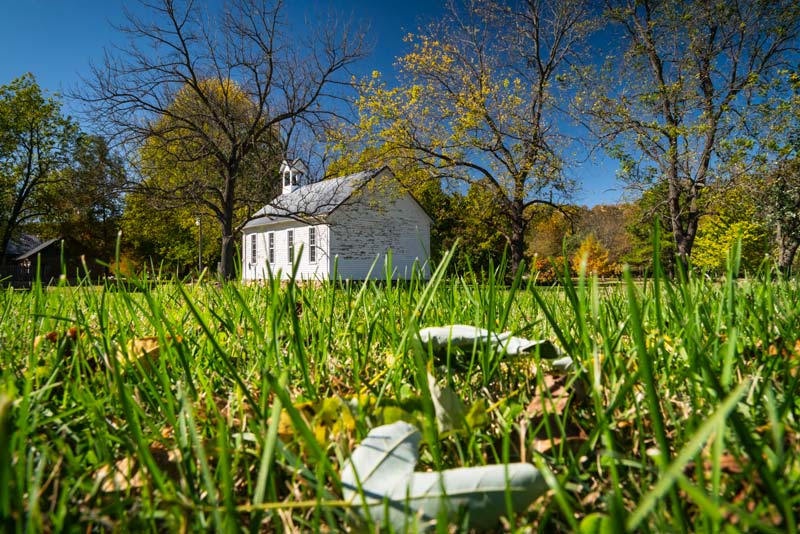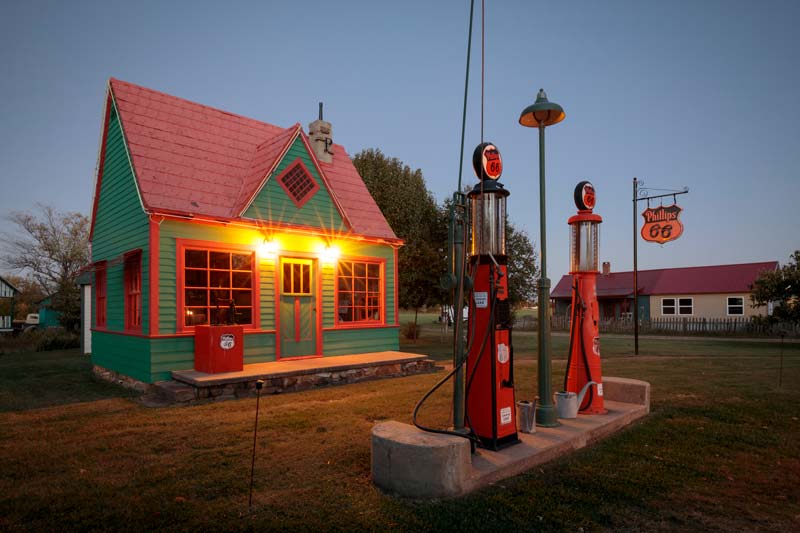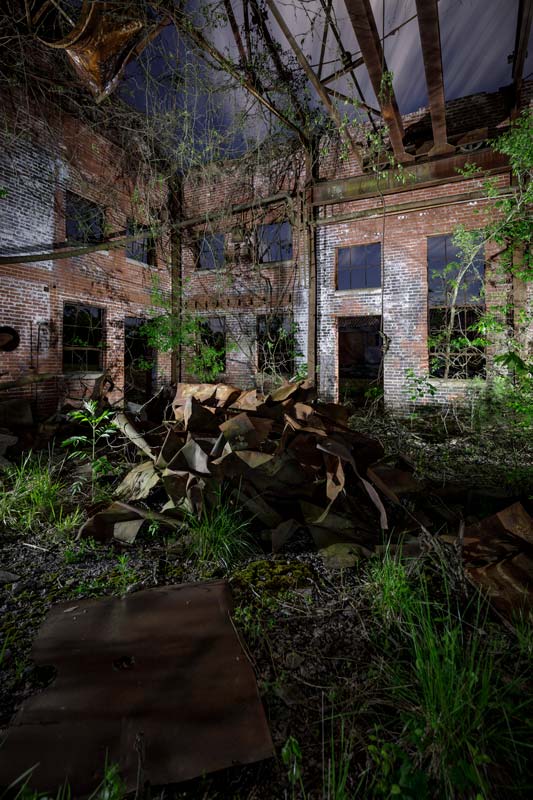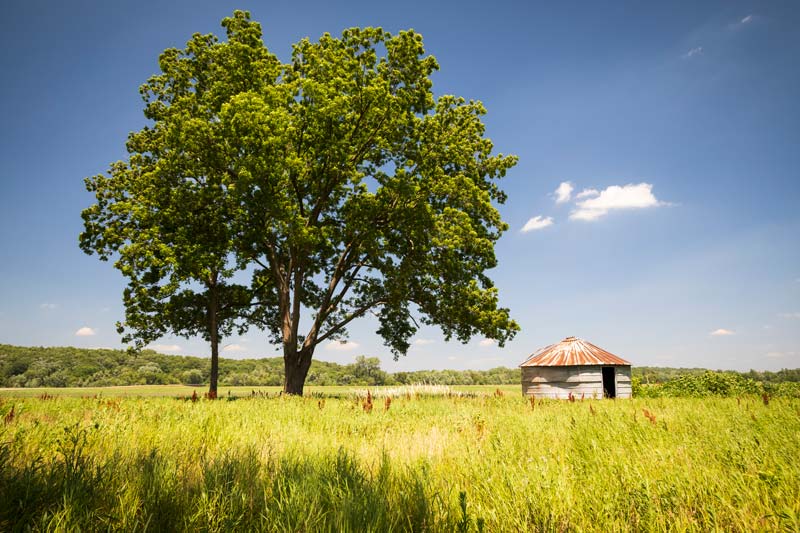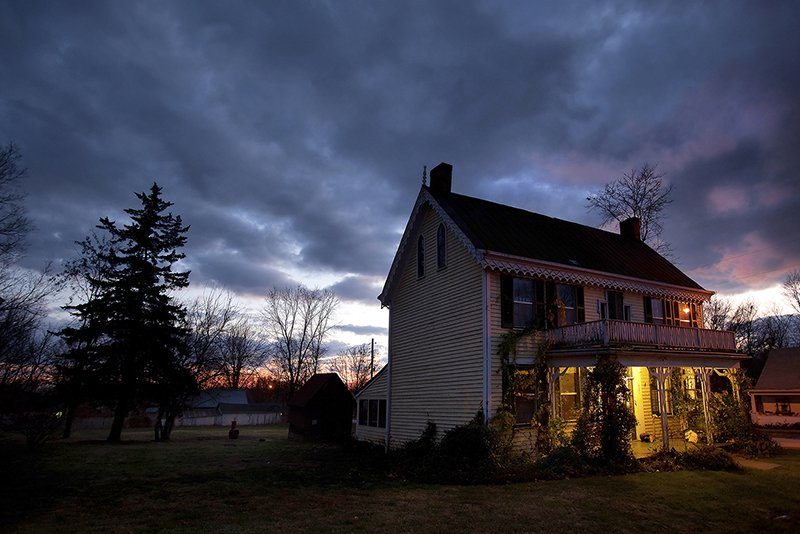Photos by Notley Hawkins
Abandoned buildings, paranormal folklore, and historic relics cast an eerie and intriguing atmosphere over Missouri’s ghost towns. Although the phrase “ghost town” might call to mind the tumbleweed-strewn roads and abandoned wooden storefronts of the Old West, ours tell a different tale. A detour through these rural locales reveals stories of a changing world and devastating acts of nature. Depopulated or simply forgotten, many have fallen into disrepair. Others have only remnants of foundations, cemeteries, and other artifacts as proof of their former heydays. Some maintain a sparse population with a firm hold on their heritage.
Georgia City • 9 miles northeast of Joplin
Georgia City’s story began in 1868 when founder John C. Guinn established the Jasper County town and named it after his home state. Within a year, the population had grown to 200 and a post office was erected. A decade later, there were only 50 people living there. Within another 20 years, the town was all but abandoned. A 1930 petition by the founder’s daughter vacated the town and returned it to farmland. The only remnant of the previous community is the Georgia City Cemetery (pictured in the top photo) in Oronogo.
Bloodland • 4 miles southeast of Fort Leonard Wood
Located in Pulaski County, Bloodland was established by a Mr. Blood in the late 19th century. When Fort Leonard Wood was constructed during World War II, the residents of Bloodland were displaced, and the once-thriving village was wiped o the map to make room for the military post. All that’s left is a church bell, which was relocated to nearby Waynesville. Personnel stationed at Fort Leonard Wood have circulated rumors of hauntings in the Bloodland area since the 1940s.
Arlington • 13 miles southwest of Rolla
Established around 1867, Arlington was a popular tourist destination thanks to the Stony Dell Resort, which drew guests from nearby Route 66. When the highway was rerouted and the original two-lane roadway became a dead-end, visitors to the town declined. Much of Stony Dell was demolished, but a handful of abandoned buildings and overgrown lots remain. Today, roughly 20 people live in the area, which has been incorporated into nearby Newburg.
Jollification • 36 miles southeast of Joplin
Built around a whiskey distillery and grist mill, Jollification (or Jolly) was established in 1848 and is now listed on the National Register of Historic Places. Largely destroyed during the Civil War and later bypassed by the railroad, the town was eventually dissolved. Today, the mill still stands, and the area has been converted into a historical and recreational park with restored buildings for tourists to enjoy. It also serves as a popular trout-fishing destination.
Red Oak • 20 miles northeast of Carthage, Red Oak II • 4 miles northeast of Carthage
The short-lived Lawrence County village of Red Oak was established in 1877 and dissolved in 1922. Artist Lowell Davis, who was born there, purchased buildings from Red Oak and other area ghost towns in 1987. He moved them, piece by piece, to a field outside Carthage, dubbing his new village Red Oak II. Tourists visit to see the re-created sites, including a feed and seed store, blacksmith shop, jail, country church, schoolhouse, and more.
Saint Annie • 16 miles southwest of Fort Leonard Wood
Saint Annie was once home to a bustling oil facility that provided work for many of its residents and earned the town the nickname of Gulf City. The small community in Laclede County is named for Saint Anne, mother of the Virgin Mary. Although the town was founded in 1878 with the establishment of a post office, the date and circumstances surrounding its dissolution are unknown. Residents still live in and around the unincorporated area.
Wakenda • 30 miles northwest of Marshall
Wakenda was abandoned after Missouri River floods devastated the area in 1993 and again in 1995. The town was platted in 1869 and a post office was established in 1876. Although the layout of the town is still visible on GPS maps, the streets have become farm fields with a sparse collection of abandoned buildings, trucks, and farm equipment.
Related Posts
10 Books on Missouri’s Native American History
Looking for more reading on the Osage and Missouria tribes? Parts 2 and 3 of our special series are forthcoming in September and October, but in the mean time we highly recommend this selection of books that cover the subject.
Pickleball Is Taking Missouri By Storm
It took about a decade for pickleball to sweep Missouri. With more than 100 locations developed since 2010, Missouri might just have the fastest-growing pickleball community in the country.
Missouri’s 10 Prettiest Small Towns
Missouri is defined by its small towns as much as anything else. Between our state’s two great metropolises lies our state’s heart—where tiny towns populate great plains and small communities dot the rugged landscape of the Ozark hollows. Some sit high above the Missouri on great river bluffs; some are tucked away in the woods.

